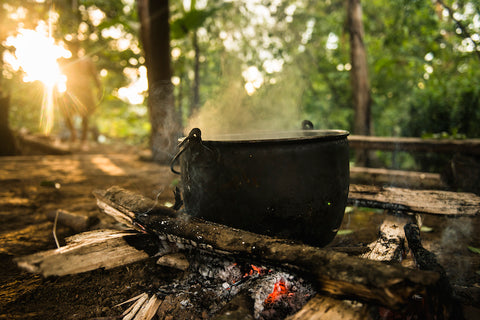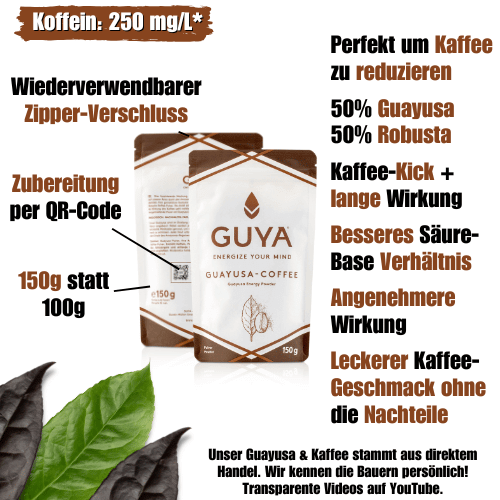Life & Traditions of the Kichwa Indians and Quechua Peoples

Introduction
For over 1,500 years, the Kichwa, the indigenous people of the Amazon, have used the Guayusa plant for various purposes. Thereby Guayusa not only drunk, but used in a variety of ways. For the Kichwa it is not only about the fact that Guayusa makes you awake for a long time, but also about spiritual aspects. In the following we would like to introduce the history, the traditions and the present life of the Kichwa people.
Table of contents
- The history of Guayusa
- Traditions and way of life of the Quechua peoples
- And what do we have to do with it?
1. the story of Guayusa
There is most diverse stories about how the Quechua people, the indigenous people in the Amazon, Guayusa discovered. The oldest finds of dried Guayusa-leaves date back more than 1500 years. They were found in the tomb of a shaman in Bolivia. Nowadays, however, it is believed that Guayusa originally comes from Ecuador.
The Quechua people, also called Kichwa Indians, use the invigorating effect of Guayusa before and during the hunt. Since Guayusa tea promotes concentration and strength - All information about the effect of Guayusa can be found in our linked article.
According to legend, this plant was given to them by the gods as a source of energy.

That is why Guayusa drunk mainly in the early hours of the morning to be ready for the hunt and to talk about the dreams of the previous night. The youngest daughter-in-law had to get up very early in the morning to make the brew from Guayusa leaves and water. More about the use of Guayusa tea by the Kichwa Indians can be found in our article "Guayusa - Use by the indigenous people".
While they used the Guayusa-brew, they talked about creative thoughts, inspirational ideas, and told each other stories about their ancestors. To the Guayusatea was said to have health-promoting effects, for example, for stomach problems, headaches or for external use on injuries and against insects. All members of the family lived together in a large house, even after the wedding. Work was only done from Monday to Wednesday.
2. traditions and way of life of the Quechua peoples
How do the Kichwa Indians live today?
Uli, our local collaborator in Ecuador, decided to emigrate from Germany to Ecuador 16 years ago. He lives together with his wife, a Kichwa, in the city of Tena. This is the capital of the province of Napo, the canton of Tena, and is located in the middle of the Amazon rainforest. With him we talked about traditions and the present way of life of the Quechua peoples.
2.1 The Kichwa people and their affiliation with the Quechua Indians
The Kichwa are the indigenous people in Ecuador and belong to the Quechua Indians. These are all ethnic groups, spread across Peru, Bolivia, Ecuador, Colombia, Chile and Argentina, who share the native language Quechua. Quechua translates to "valley" or "the highlands." So traditionally they refer to themselves as "people of the high altitude Quechua".
A total of 9 to 14 million people speak Quechua, but apart from the assignment to this common language, no or hardly any common identity has been formed so far. This is due to the fact that the regional dialects are so large that mutual understanding is hardly possible.
Despite their great ethnic diversity and the differences in language and dialect, the Quechua Indians have some things in common, especially with regard to their way of life and economy.
2.2 Life and economy in harmony with nature
The Quechua traditionally work mostly in agriculture and pastoralism. In the lower-lying regions, the focus is on agriculture, while in the high-lying region of the Puna, the main activities are pastoralism, animal husbandry and the cultivation of crops.
Back to the Kichwa Indians, the ethnic group belonging to the Quechua, who live in Ecuador. Their livelihood is also traditionally rooted in agriculture. Each family independently cultivates their own land - their daily rhythm and amount of work depends on the season and weather. Environmental education plays a major role, and knowledge of the names and benefits of each plant is passed down from the earliest age. Even the names of the months refer to when which plant can be harvested. In so-called chakras, which are forest gardens, all plants that are important for themselves and for export are grown in mixed cultures. These include, for example, cocoa, banana, andGuayusa. Especially the cultivation of Guayusa is particularly important for the Kichwa, because the plant can be harvested all year round, unlike the cocoa bean, which only has certain harvest times. Guayusa is accordingly an important source of income that does not require pesticides and fertilizers.

2.3. together Guayusa Drinking - the daily tradition of the Kichwa
Guayusa plays a major role not only as an export product, but also in the traditional gathering in the morning and in structuring the day.
To this day, the communal drinking of Guayusa and the close cohesion have remained, even if it is no longer mandatory for everyone to live together in one house.
The Kichwa Indians care a lot about spending a lot of time together in the family, day after day. For this reason, great traditions tend to take a back seat as an occasion to spend beautiful moments together. The structure of their everyday life is characterized by nature and family.
4 And what do we have to do with that?
This way of life is only possible as long as the Kichwa Indians can continue to farm independently in their forest gardens in the traditional way, without the Global North in particular undermining these structures through settlement and land theft by large corporations. Otherwise, mining and rainforest clearing will deprive the Kichwa of their livelihood.
To prevent this, we are all responsible. We can act quite simply by taking a very close look at where our products come from and how they are produced. This is a concern that we take very seriously in ourGuayusa Buy tea is very close to our hearts.

















